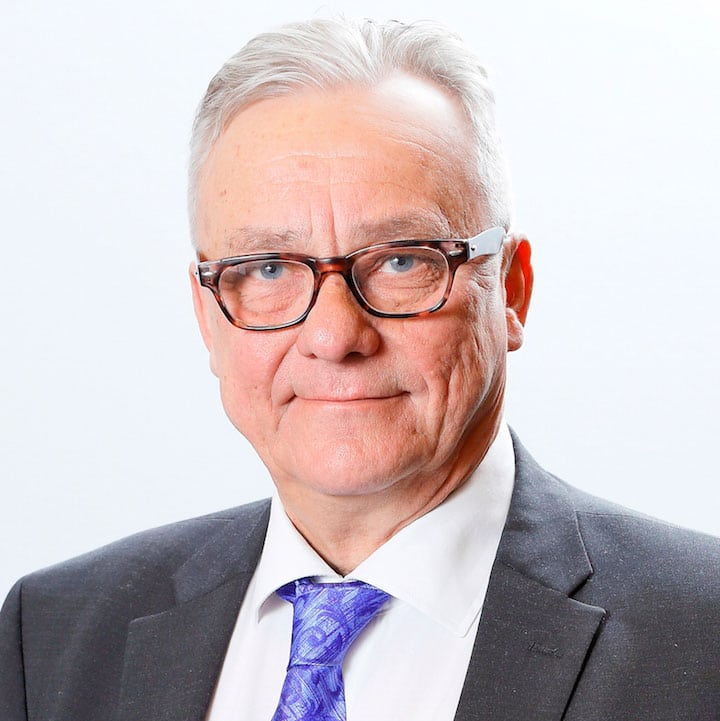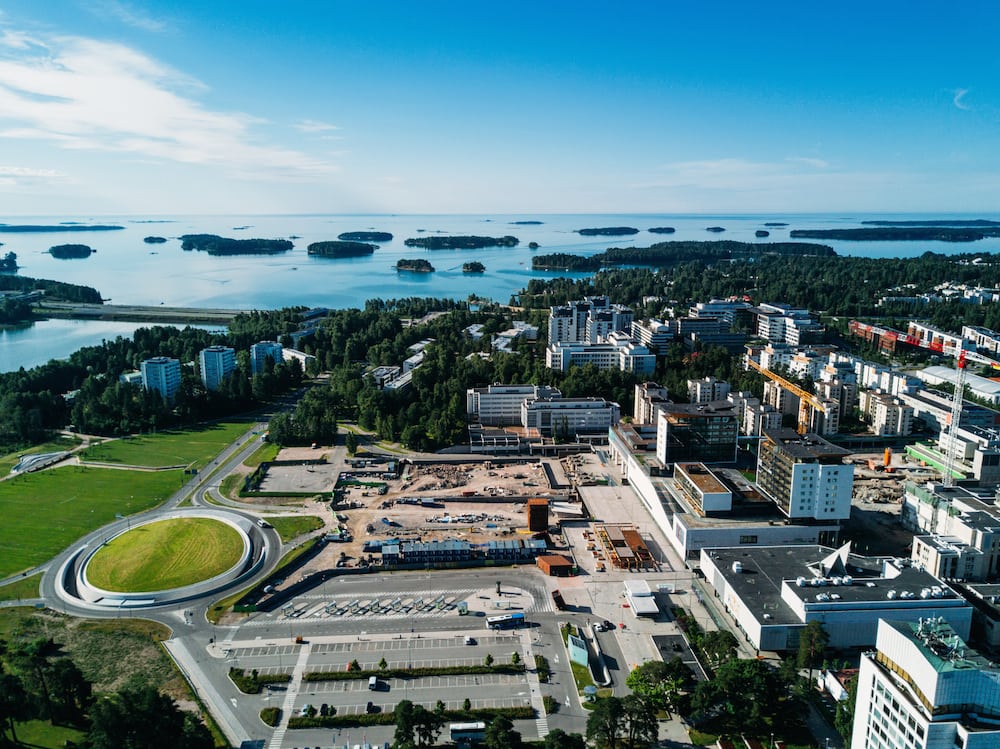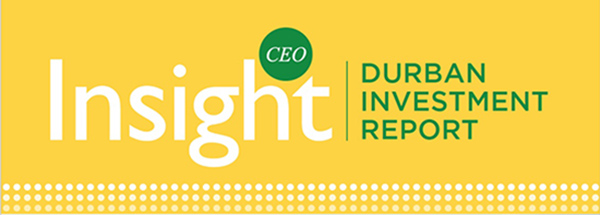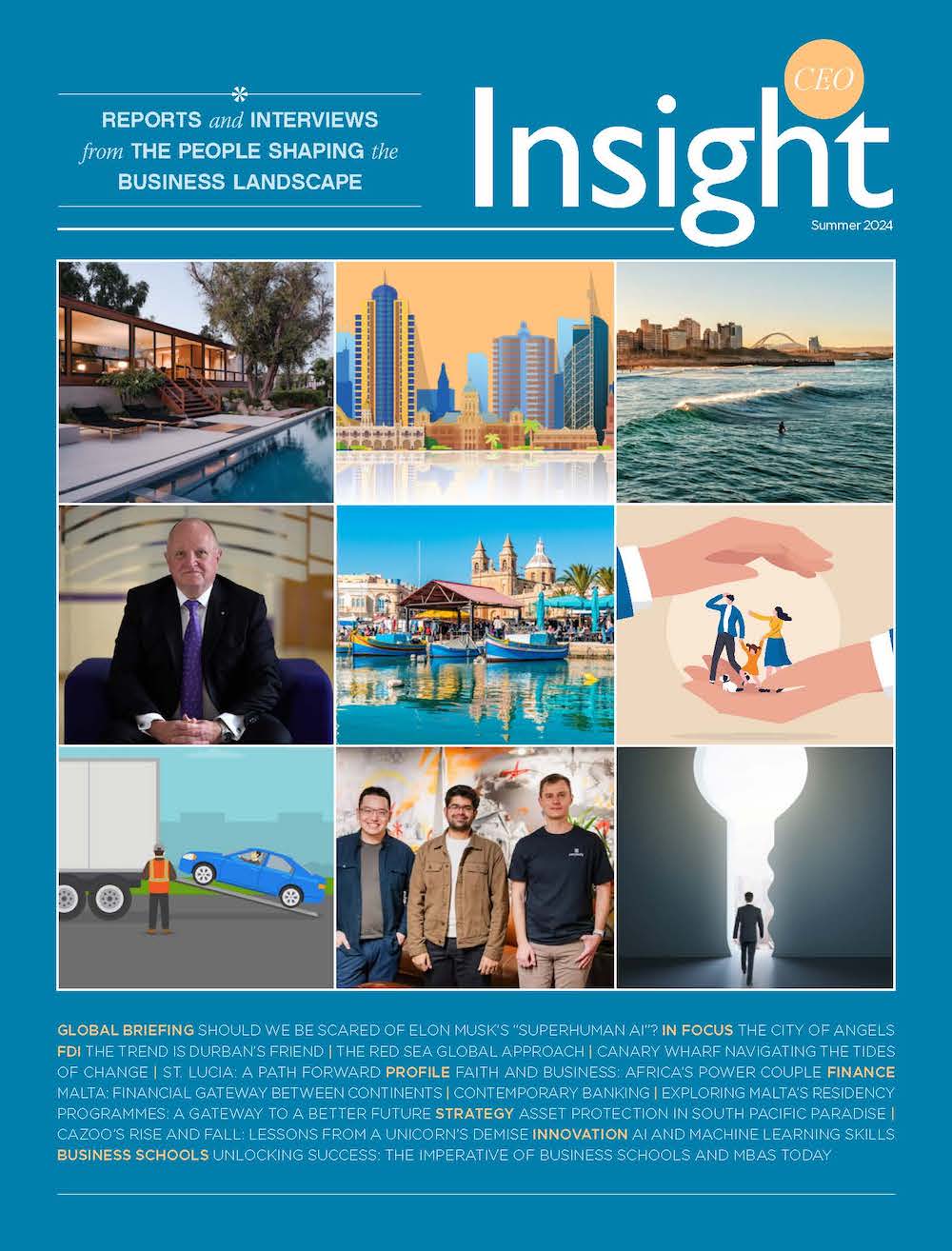Finland Leads the Way in Sustainable Mining
Share

Harry Sandström is the Director of Mining Finland, a national government programme connecting investors and partners with Finland’s world-leading mining opportunities and technology offering. Here he provides an insight into why the country is pre-eminent when it comes to sustainable mining.
CEO Insight: How do you define green sustainable mining? – Is it simply about limiting damage or do you embrace the idea of the industry’s capacity to be a bridge to a better future if done responsibly and effectively.
Harry Sandstrom: Apart from the normal things, i.e. that it is environmentally acceptable and brings economic and social benefits to the region and its people, as well as to the mining company, it must also encompass ethical raw material sourcing. When we consider the huge need for battery metals and minerals to come, this will be even more important in the future. Consequently, developments on this front must be promoted, not only within Finland, but also by supporting developing mining jurisdictions.
CEO Insight: How do you ensure revenues directly benefit the Finnish people, including those traditionally disenfranchised, like the Sami, with jobs and enhanced infrastructure?
Harry Sandstrom: Our organisation, Mining Finland, is not a player in developing the recommendations, but we are a part of that discussion and support the idea that mining companies should play a significant role in providing increased employment opportunities and better infrastructure in the affected regions, particularly in Eastern and Northern Finland. Our direct engagement extends to promoting and communicating the sustainability argument around mine location, corporate governance, environmental management, workers and affected communities to the investor, so they know what is required of them.
CEO Insight: To what extent do you share best practice with your counterparts in neighbouring countries Norway, Sweden and Russia, as well as further afield?
Harry Sandstrom: Within the Nordic region, there is close cooperation with Business Sweden and Invest in Norway, in collaboration with whom, we put on a Nordic Mining Day at PDAC in Toronto each year, a responsibility that fell to us this year. We also cooperate on sustainability regulations, the ongoing development of these, as well as collectively working on enhancing the transparency of operations.
Cooperation with Russia, meanwhile, though active in the recent past, is a little quieter at present, due to prevailing EU sanctions. However, a joint sustainable mining event will be held with the Russians at the end of April 2018 in Murmansk, NW Russia. Further afield in Asia, we are active in helping to establish infrastructure and in supporting technology from Finland. Overall, our core message is that technology companies must be involved with sustainable mining wherever it is done, not just in Finland.
“Finland is a pragmatic country – we like to keep things very simple. From the time of Nokia, for example, we have inherited a great number of good people who are now applying that knowledge from outside to the mining sector, so allowing the industry to become less siloed and to take on new ways of thinking and behaving.”

CEO Insight: To what extent is the Finnish approach to sustainability within the mining fraternity driven by the private sector?
Harry Sandstrom: We have a sustainable mining network that consists of mining companies, mining technology companies and other stakeholders, but no authorities, that looks to discuss and overcome problems in its pursuit of a sustainable mining landscape. Technological advancements and innovations like the flash smelting of copper, advanced automatic pressure filters, as well as process integration and optimisation services have meant that while our ores are low grade, our mines are profitable, so they must be pretty good!
CEO Insight: To what extent does Mining Finland reach out to start-ups in Finland, as well as the more established players?
Harry Sandstrom: The SMEs and start-ups with their niche technologies are a very important part of the overall drive for material efficiency. For example, they bring innovations to control the process and optimise the fleet, marked by fewer consumables and emissions and increased overall productivity.
CEO Insight: With Finland becoming increasingly synonymous with digitalisation and optimisation across the value chain, has this involved leveraging the wider national engineering pedigree and bringing to bear some of the non-traditional mining skills?
Harry Sandstrom: Finland is a pragmatic country – we like to keep things very simple. From the time of Nokia, for example, we have inherited a great number of good people who are now applying that knowledge from outside to the mining sector, so allowing the industry to become less siloed and to take on new ways of thinking and behaving.

CEO Insight: How does one ensure that progress achieved on the sustainability front does not slip? Is it solely down to market forces, or is the real battle to be had in winning the hearts and minds of the next generation as to the merits of sustainable mining?
Harry Sandstrom: It takes time. A lot of the changes will be made by the next generation. However, if one looks at the big companies of the world, IoT and digitalisation are top of the agenda at present, so this bodes well for mining too, despite its traditional conservatism. For SMEs, sometimes it can be hard to get the platform to demonstrate new things.
We have to take a holistic view of raw material sourcing, including recycling, so enhancing the use and flows of raw materials to the new technologies where they are most needed. At a human-wide level, we will continue to need a lot of raw materials. That is a long-term discussion and societal learning exercise to get young people, teachers and politicians to understand the future challenges of raw material supply and embrace new ways of thinking.
CEO Insight: What have you found to be the view of Finland’s mining regulatory landscape and compliance criteria from within the ranks of the global investor community?
Harry Sandstrom: The strict regulations around environmental affairs have been good for technology companies as they set a high bar, that creates a need to make something new. The regulations are considered to be understandable and realistic and so there is little objection to them. Moreover, with predictability the primary concern, given that the regulatory framework is not expected to change, there are very few complaints regarding the strictness of the compliance criteria and very little evidence that Finland is being rejected in favour of somewhere with less exacting demands. It is accepted, however, that the regulatory process can sometimes be too slow and so improvements are actively being sought on that front.
CEO Insight: Predictability is also present in the country having been completely mapped geophysically. How else is productivity enhanced?
Harry Sandstrom: There is comprehensive and readily available data covering the whole country, while most services and products can be sourced locally, credit is available, as too is support for companies looking for development partners. All of which increases the productivity.
“Those who can’t see the material benefits sometimes fail to see the need for mining for the national and regional economies. At Outokumpu they understand, as there is a steel works which provides jobs and prosperity, that wouldn’t be there without the raw material. They remain, however, just as concerned for the environment, especially so, since the activity is on their doorstep.”

CEO Insight: What are the stand-out examples that best evidence the success of Finland’s smart mining approach, and premium digitalisation and optimisation across the value chain?
Harry Sandstrom: Kittilä gold mine did not initially look too promising when first discovered, yet turned out to be a huge deposit. Initially developed by a collection of junior companies supported by the Geological Survey of Finland, it was thereafter operated by Europe’s biggest gold producer, Agnico-Eagle. In the middle of Lapland and near a popular skiing resort (yet out of sight), the two seemingly disparate elements have worked hand-in-hand to successfully develop the region.
This has seen mine productivity and regional prosperity both increase. Meanwhile, Outokumpu’s chromium mine, the biggest in Europe and one of the biggest in the world provides the most important raw material for the stainless steel mill that sits nearby. Today, it is considered to be one of the world’s most automated and greenest mines, such that its footprint is virtually invisible to the townsfolk of Kemi nearby.
CEO Insight: How would you describe the national sentiment around mining? Is there a disconnect between those in the regions directly affected and those in urban areas far away from the face?
Harry Sandstrom: Those who can’t see the material benefits sometimes fail to see the need for mining for the national and regional economies. At Outokumpu they understand, as there is a steel works which provides jobs and prosperity, that wouldn’t be there without the raw material. They remain, however, just as concerned for the environment, especially so, since the activity is on their doorstep.
CEO Insight: Is there an understanding at government level that the country’s engineering pedigree has traditionally fuelled the economy and that its role is to create the right conditions for its industrial identity to continue to flourish?
Harry Sandstrom: Yes, I believe so. The real decision-makers who understand the Finnish position and dependence of the economy on industry and export, fully understand the need to keep it running smoothly. While mines turnover may not be of huge significance to the economy, everything else around that, such as the technology and services, certainly is. The idea is to help create a Finnish industrial community.
CEO Insight: How do you see Finland’s credentials as the pre-eminent force in sustainable mining being further reinforced?
Harry Sandstrom: I would like to see simple digitalisation solutions breaking down silos and improving mining right through from exploration to production to processing to environmental monitoring. In short, I would be very happy if Finland can play a key role in the global process of improving productivity across the whole value chain.
In addition, I would personally like to see Finland promoting development in mining countries across Africa, Asia and South America, where there is a greater need for governments to develop their policies and strategies. Ideally, this would assist such countries determine what they were looking to achieve from their mining industries, while at the same time helping them develop related downstream industries and business sectors.
CEO Insight: Do you envisage Finnish exporters materially benefitting from such endeavours?
Harry Sandstrom: Not only Finnish exports. In many cases, technology companies are looking for partners in the focus country rather than customers, so it is more about technology transfer. This increases competition, which is needed for the future health and growth of the industry.
CEO Insight: To what extent is your office proactive rather than reactive?
Harry Sandstrom: Mining Finland’s aim is to encourage investors to look at the big picture of the country as an international sustainable raw material producer, to include recycling, which can provide raw materials for national and European industry. Our objective is to attract investors who are looking to the long term and are keen to take part in the development of the mining cluster, its technology and practices.
For more information:
Geological Survey of Finland GTK
P.O.Box 96, FI-02151, Espoo, Finland
T +358 2950 32170
www.gtk.fi
www.miningfinland.com




























